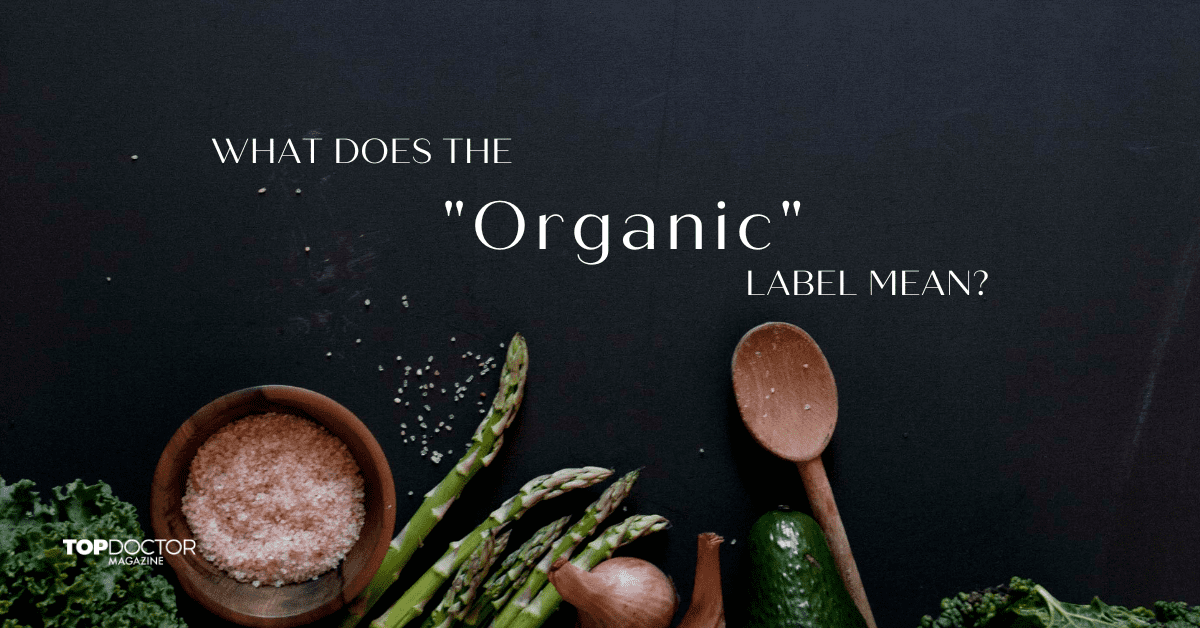Decision paralysis often strikes when we are confronted with long lists of nutrition facts and declarations, like organic labeling, on the packaging. This is because there is some uncertainty about what the organic labels entail. What makes a product “organic,” and how does this differ from other labels, like non-GMO or natural? An increasing number of products on the shelves carry the organic label, so what does this mean for us as consumers?
What Does Organic Mean?
“Organic” is a widely used term in both scientific and agricultural circles. Scientifically, organic compounds are considered to be fundamental to life on Earth. Agriculturally, for products to use the organic label or certified organic seal, producers must comply with rigorous measures that regulate ingredients in their products.
Organic food focuses on following agronomic and animal husbandry practices. U.S. sales reached $63 billion in organic produce in 2020, with many consumers feeling that it is a safer, healthier choice than conventionally grown food.
What Does “Organic” Mean in Science?
The chemistry definition of “organic” is unequivocal. Compounds are substances composed of many identical molecules. Organic compounds typically contain carbon-carbon bonds or carbon-hydrogen bonds. Chemical compounds are fundamentally carbon-based atoms covalently linked to other elements. Hydrocarbon bonds are studied primarily in a scientific discipline called organic chemistry. Organic compounds are of particular importance as they are known to be present in almost all known life on Earth.
What Does “Organic” Mean in Food?
The agricultural use of the term “organic” is wholly different from the scientific meaning — it refers explicitly to farming practices. Most countries have specific parameters for products to be considered organic. For an agricultural product or by-product to be labeled as “organic,” the U.S. Department of Agriculture (USDA) has outlined a strict set of practices and principles that producers must follow. According to the USDA, animal products like meat, dairy, poultry and eggs must come from animals not treated with growth hormones or antibiotics. For food such as fruit and vegetables to be certified organic, they must be produced without synthetic fertilizers, sewage sludge, conventional pesticides, ionizing radiation or bioengineering.
Agricultural products and by-products that subscribe to these requirements qualify for the USDA organic label. Organic labels do not indicate how healthy or nutritious the product is; instead, they refer to the agricultural practices followed. A comprehensive list of allowed and prohibited substances can be found in the Code of Federal Regulations Archive.
Why Are Food Labels So Important?
“Organic,” “gluten-free” and “natural” are just a taste of the many labels products can have. So, it can be unclear which labels are underpinned by industry or federal bodies and which are merely slick marketing terms. As consumers, it is intimidating to traverse the gray areas of food labeling without guidance.
A common misconception is that the labels reflecting natural, genetically modified organisms (GMOs) and organic are interchangeable. The USDA provides a clear distinction between GMO, natural and organic labeling.
Food possessing the “natural” label has no added colorants or artificial ingredients, although they can still contain GMOs. Natural food products can be processed as long as the process does not fundamentally change the product.
Genetically modified crops are altered and modified in laboratories to be robust. Currently, the USDA does not certify non-GMO crops. These seemingly subtle nuances in regulation impact the final products being sold.
What Are the Requirements for the Organic Label?
The National Organic Program (NOP) sets the presiding federal regulatory framework, which is upheld, enforced and accredited by the USDA. This framework governs all organic livestock and crops produced in the U.S. or imported for sale and distribution in the country. The USDA also regulates the organic labels present on produce.
The Requirements for a 100% Organic Label
- 100% certified organic ingredients and processing aids;
- No GMOs;
- 100% compliance with the National List of Allowed and Prohibited Substances;
- USDA certification;
- Organic seal and label allowed.
The Requirements for an Organic Label
- 95% certified organic ingredients;
- No GMOs;
- Non-organic ingredients comply with the National List of Allowed and Prohibited Substances;
- USDA certification;
- Organic seal and label allowed.
These regulations apply to all ingredients except water and salt. If the products meet either of the organic labeling categories, they can display the USDA organic label and any related phrases on their products or advertising. Organic labels assure us that no bioengineering, irradiation, pesticides, synthetic fertilizers or chemicals have been used.
Products with less than 95% organic ingredients do not qualify for a USDA organic label. However, there are still allowances made by the USDA to use the term “made with organic ***,” such as:
- At least 70% certified organic ingredients;
- No GMOs;
- Non-organic ingredients comply with the National List of Allowed and Prohibited Substances;
- Certification required.
These products may state “made with organic ***” — up to three ingredients or food groups — on the packaging, labels or advertising. Products with less than 70% of organic ingredients may only use the term “organic ingredients.” They cannot use the term “organic” anywhere on their packaging, labels or advertising. They are allowed to stipulate that certain items are organically produced on the ingredients statement’s information panel. This ensures that, as consumers, we can rely on the USDA’s regulation of organic produce.
While these regulations are stringent, producers should not be dismayed; they can apply for their USDA organic certifications and organic labels if specific criteria are met. These criteria include:
- Not using synthetic fertilizers, chemicals, irradiation or pesticides to the crop or soil for three years before harvest.
- Ensuring that animals are raised in living conditions that accommodate their natural behaviors and are not given antibiotics or hormones.
How Many Organic Farms Are in the U.S.?
While organic farms are not currently the majority in the U.S., they are steadily rising. From 2011 to 2016, Pew Research Center indicated a 56% increase in organic farms in the U.S. According to the USDA Statistics Service, over 14,000 certified organic farms were operating in 2016. Fast forward to 2019, roughly 16,500 organic farms are situated on 5.5 million acres. The top states contributing to organic farming and production are Vermont, California, New York and Maine.
A Parting Reminder
Labels should guide, not confuse. Knowing what to look for and what labels mean gives consumers the ability to choose products that resonate with them. Products with the green seal of approval are often a safer, cleaner choice for you and the environment. The organic label is not merely a marketing ploy but a solemn assurance from the producer that they align and comply with the requirements the USDA sets. Taking steps to be a more conscious consumer can continue from here.






0 Comments